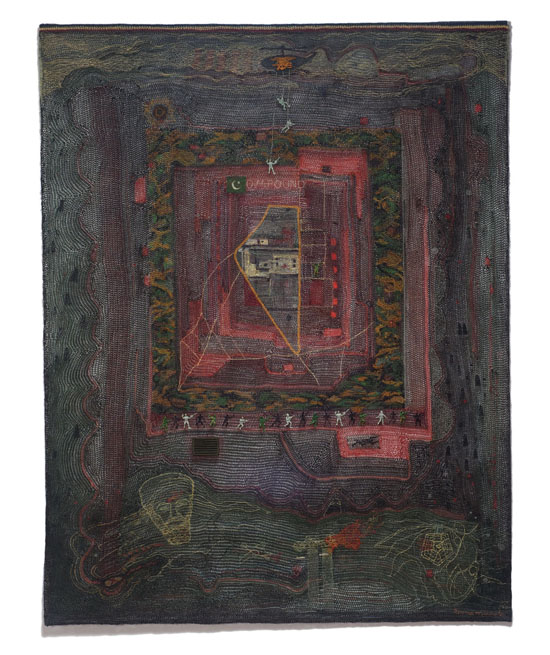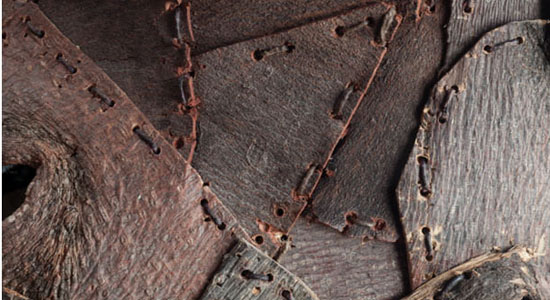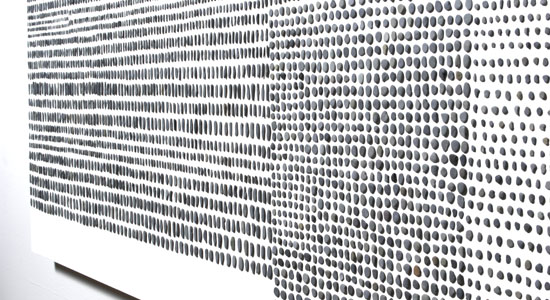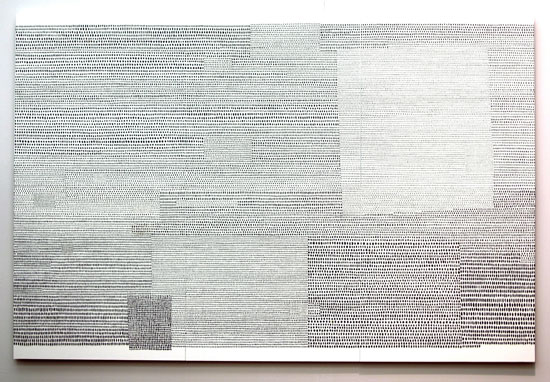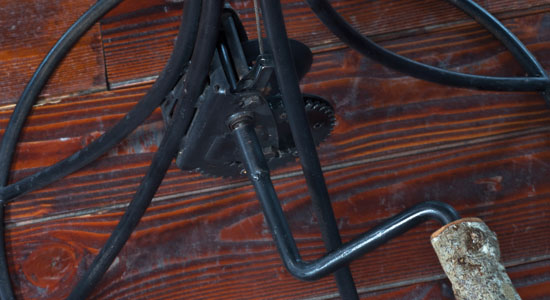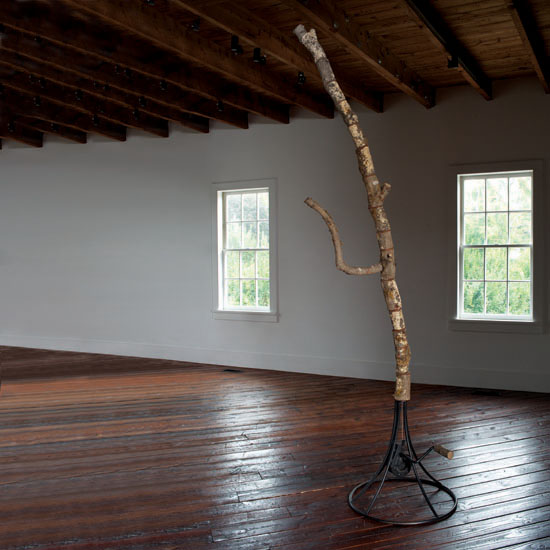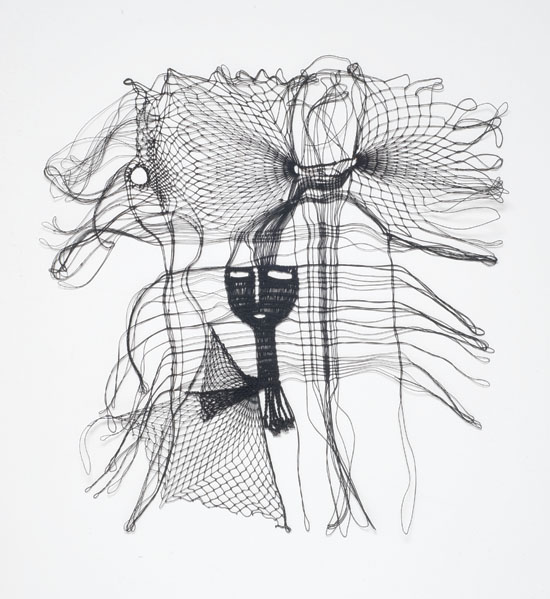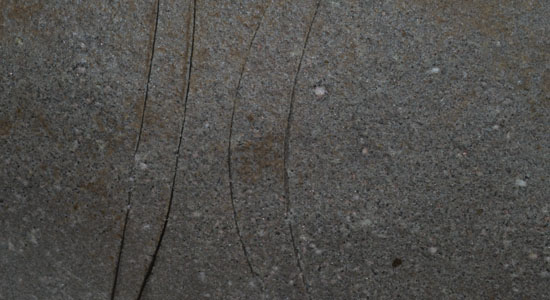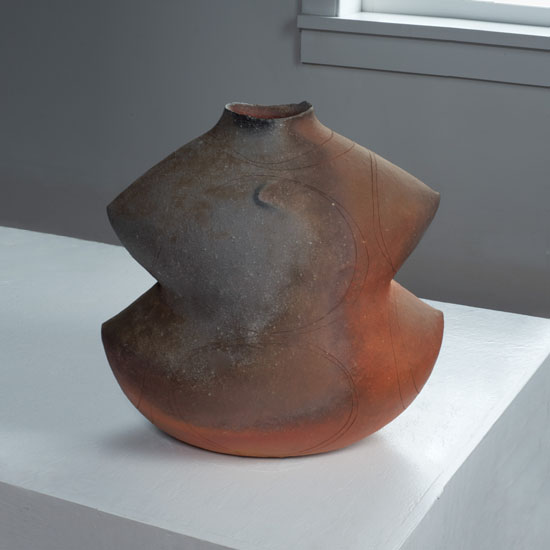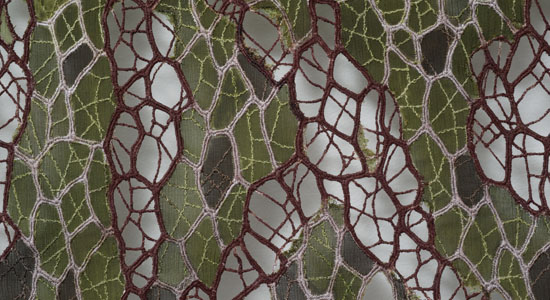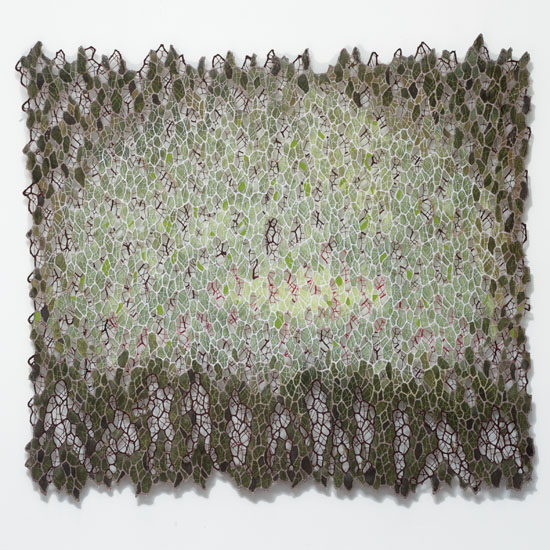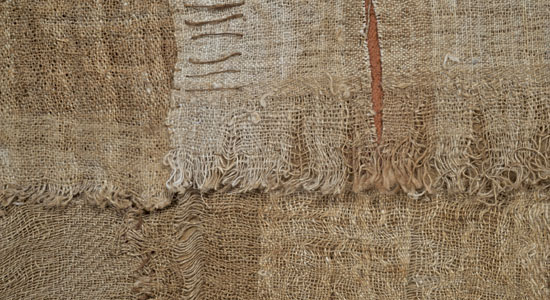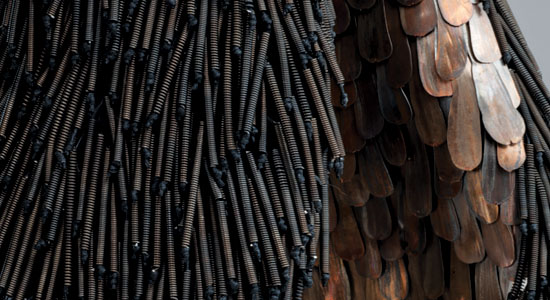Norma Minkowitz is one of the 25 artists whose work browngrotta arts will highlight at SOFA NY. Among the works by Minkowitz that will be displayed is Compound, which illustrates the capture of Osama Bin Laden. Her inspiration for the piece was unexpected, she explains.
“I was already working on a wall piece, starting in a spontaneous, unplanned manner arranging lines and subtle patterns, until I had a feeling of the direction it would take. Suddenly the linear image took on the apparition of an aerial view of Osama Bin Laden’s compound in Pakistan that I had recently read about and viewed in a newspaper article. The aerial view of the compound became both a replica of the actual space as well as an imaginary vision that I had.” Minkowitz is a National Endowment of the Arts grant recipient, a Fellow of the American Craft Council and a James Renwick Alliance Master of the Medium. The Alliance describes her as a sculptor, who ” has transformed the traditionally feminine art of crochet into a medium for figurative sculpture. The transparent openness of the crochet allows her to draw in three dimensions to reflect the psychological ideas beneath the surface.” Minkowitz’ work is included in numerous permanaent museum collections including the Metropolitan Museum of Art, New York, New York; Museum of Arts and Design, New York, New York; De Young Memorial Museum, San Francisco, California; Philadelphia Museum of Art, Pennsylvania and the Wadsworth Atheneum, Hartford, Connecticut.


